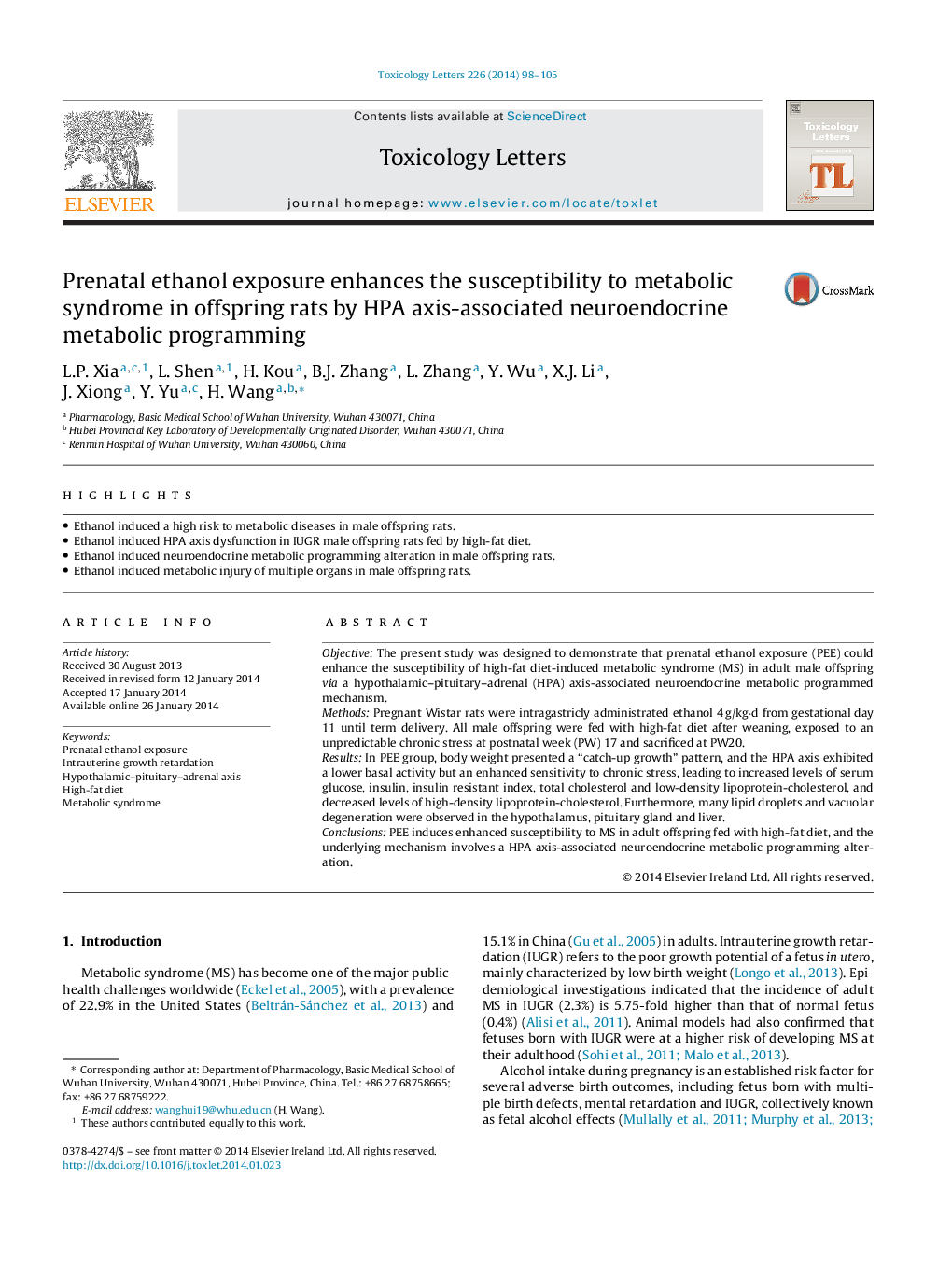| Article ID | Journal | Published Year | Pages | File Type |
|---|---|---|---|---|
| 2599066 | Toxicology Letters | 2014 | 8 Pages |
•Ethanol induced a high risk to metabolic diseases in male offspring rats.•Ethanol induced HPA axis dysfunction in IUGR male offspring rats fed by high-fat diet.•Ethanol induced neuroendocrine metabolic programming alteration in male offspring rats.•Ethanol induced metabolic injury of multiple organs in male offspring rats.
ObjectiveThe present study was designed to demonstrate that prenatal ethanol exposure (PEE) could enhance the susceptibility of high-fat diet-induced metabolic syndrome (MS) in adult male offspring via a hypothalamic–pituitary–adrenal (HPA) axis-associated neuroendocrine metabolic programmed mechanism.MethodsPregnant Wistar rats were intragastricly administrated ethanol 4 g/kg·d from gestational day 11 until term delivery. All male offspring were fed with high-fat diet after weaning, exposed to an unpredictable chronic stress at postnatal week (PW) 17 and sacrificed at PW20.ResultsIn PEE group, body weight presented a “catch-up growth” pattern, and the HPA axis exhibited a lower basal activity but an enhanced sensitivity to chronic stress, leading to increased levels of serum glucose, insulin, insulin resistant index, total cholesterol and low-density lipoprotein-cholesterol, and decreased levels of high-density lipoprotein-cholesterol. Furthermore, many lipid droplets and vacuolar degeneration were observed in the hypothalamus, pituitary gland and liver.ConclusionsPEE induces enhanced susceptibility to MS in adult offspring fed with high-fat diet, and the underlying mechanism involves a HPA axis-associated neuroendocrine metabolic programming alteration.
